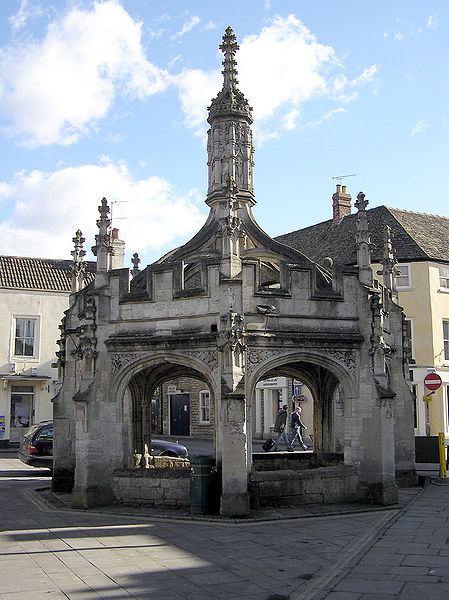The great English historian (c.1090-c.1143) was born somewhere in Wiltshire. Later he became a monk at the abbey, where his scholarly endeavours led him to be considered England’s greatest medieval historian after Bede. Although best known in his own time, as now, for his historical writings (his Deeds of the Bishops and Deeds of the Kings of Britain), William was also a biblical commentator, hagiographer, and classicist, and acted as his own librarian, bibliographer, scribe and editor of texts. He was certainly one of the best-read of all twelfth-century men of learning. He records the tradition that John Scotus Erigena, the philosopher, lived at the abbey in the late 9th century and was murdered there by his pupils. William himself spent most of his life in the monastery at Malmesbury. His design is to tell both artistically and critically, all that is known about his country’s history from the first coming of the English and to “fill up the chasm of two hundred and twenty-three years” after Bede. William’s chronicle is in two parts. The first, divided into five books, is called A History of the Kings of England (Gesta Regum Anglorum) and covers the period from A.D. 449 to 1127. The second part, entitled Historia Novella or Modern History, is in three books and extends to 1142. He was one of the most prolific writers of his time; his other productions include a history of the prelates of England (Gesta Pontificum Anglorum), a life of St. Wulfstan, and a history of the church of Glastonbury.
First flight
Eilmer of Malmesbury (also known as Oliver due to a scribe’s miscopying, or Elmer) was an 11th-century English Benedictine monk at Malmesbury Abbey who wrote about astrology and is best known for his early attempt at a gliding flight using wings. In fact, very little is known of him and what is known is recorded by William of Malmesbury in his Gesta Regum Anglorum, according to which Eilmer had in his youth read the Greek fable of Daedalus, creator of the Minotaur’s labyrinth and maker of wings for his son Icarus. In imitation, Eilmer affixed wings to his hands and feet and launched himself from the top of a tower at Malmesbury Abbey. It is said that he flew for about a furlong (just over two hundred meters) but the absence of a tail wing meant that he lost control and landed badly, breaking both legs, after which he was crippled for life. “Olivers Lane”, off the present-day High Street and about 200 meters (660 ft) from the abbey, is reputed to be the site of Eilmer’s landing.
The Market Cross
In the center of the town stands the Market Cross. Market crosses were used to mark a market square in market towns since permission to hold markets was within the gift of the monarch. They arose out of the traditions of early medieval ‘Insular art’, that is the distinctive art forms that developed in the British Isles following the departure of the Romans. The tradition of elaborately carved free-standing crosses goes back to the 7th century. Built in about 1490, Malmesbury’s cross was possibly constructed using stone salvaged from the recently-ruined abbey. It was described by John Leland writing in the 1540s as a ‘right costly piece of work’, which was built to shelter the ‘poore market folke’ when ‘rain cometh’. Octagonal and intricately carved, it is recognized as one of the best preserved of its kind in England.
The Tower House
Dominating the skyline in the east of the town is the Tower House, mentioned here mostly because of its eccentricity. A medieval construction, containing a high-roofed main hall where it is said Henry VIII dined after hunting in nearby Bradon Forest, in the 1840s, a doctor living in the house who had a passion for astronomy, built the tower that protrudes from the roof. He must have had a very good friend in the planning department.


0 Comments